David McCullough’s latest book tells the story of a small group of Revolutionary War veterans and pioneers who set out on an extraordinary 800-mile journey through the wilderness to establish the first settlement in the Ohio Territory.
-
Summer 2019
Volume64Issue3
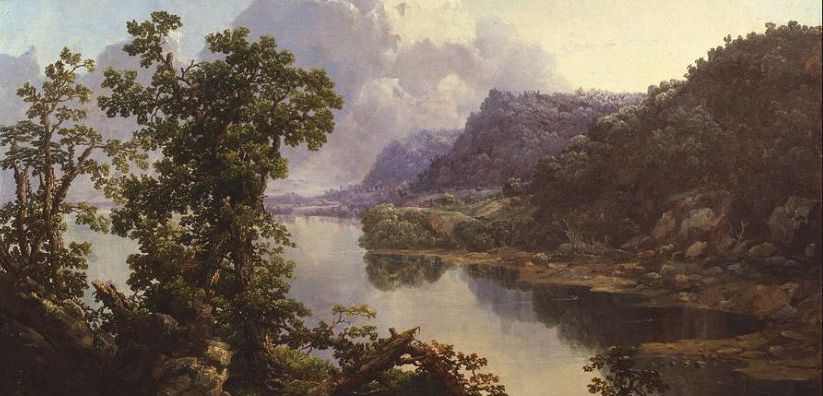
The Seneca Indians called it the Ohi:yo’ (pronounced oh-hee-yoh), literally the “Good River.”
When French explorer La Salle first saw the Ohio in 1669, he described it as La Belle Rivière, " the Beautiful River.”
Thomas Jefferson echoed their sentiments, calling the Ohio “the most beautiful river on earth” in his book, Notes on the State of Virginia, even though he had never seen it.
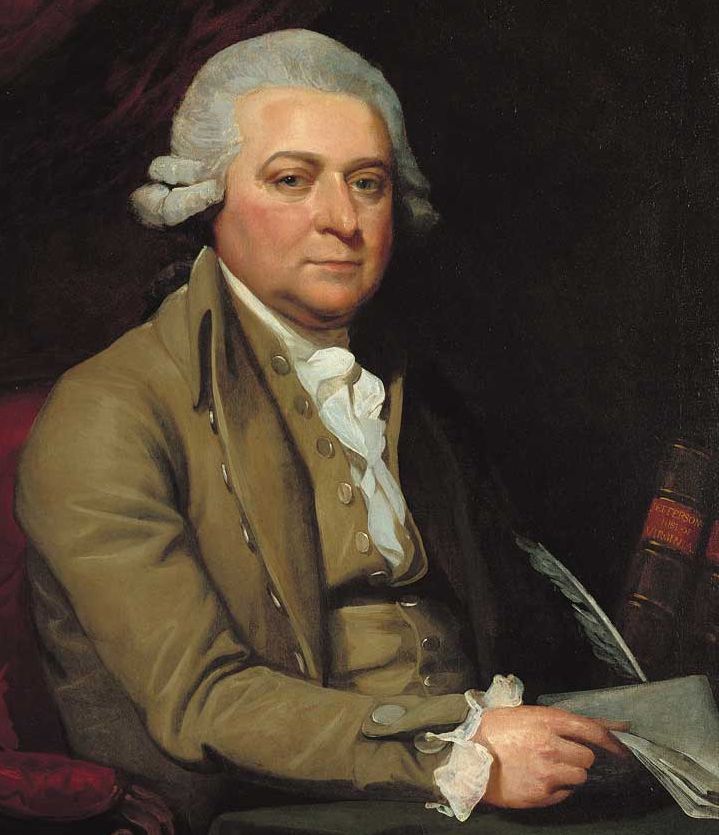
However it was described, the Ohio River became the primary means to venture west for the early European settlers, allowing them to float through largely roadless forests from Williamsport or Pittsburgh in Pennsylvania to the Mississippi, and then on down to New Orleans and the land of the ten-dollar bank note known as “le Dixie.”
The Ohio River was also an important boundary. To its south lay territory claimed by Virginia, stretching to the Mississippi. The Treaty of Fort Stanwix in 1768 ceded the land to Virginia and by the 1770s early settlers were following Daniel Boone into what would later become the state of Kentucky.
The land to the north of the Ohio remained largely wilderness. But it continued to be very much on the mind of many American colonists. In 1774, the British Parliament voided their claims to the territory in the controversial Quebec Act and declared the Ohio territory part of Quebec. The resulting anger among the Americans, after they had fought a succession of bitter wars against the French-speaking Catholics in Canada, was one of the factors pushing them to revolt against the King a few years later.
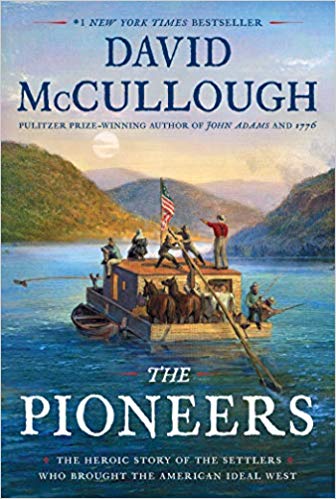
In his new book, The Pioneers, David McCullough tells the extraordinary story of the first settlements in the vast wilderness of the Northwest Territory. McCullough got his start in 1964 as an editor and writer for American Heritage, his “graduate school” as he's called it. “Once
I discovered the endless fascination of doing the research
and of doing the writing, I knew
I had found what I wanted to do in my life,” he says. And we are delighted that over the years he has done such an admirable job in continuing the “American Heritage style.”
McCullough points out there was almost no story of an American Northwest to tell, reminding readers that in the peace negotiations to end the Revolution, British commissioners repeatedly tried to make the Ohio River the westernmost boundary of the United States. But John Adams, it is said, responded indignantly, “No! Rather than relinquish our claim to the western territory, I will go home and urge my countrymen to take up arms again and fight till they secure their rights, or shed the last drop of blood.” His fellow negotiator John Jay agreed and the British found it best to yield the point.
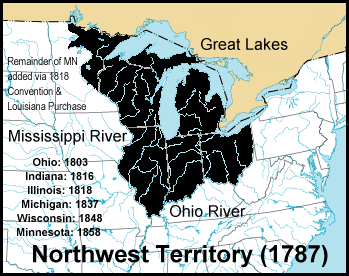
So at the end of the Revolution, the young nation gained an extraordinary territory of more than 260,000 square miles, five times the size of Mother England herself. “The new realm was spoken of as ‘the back country,’ ‘the vast interior,’ ‘the howling wilderness,’ ‘the fair domain beyond the Ohio,’ or simply ‘the Ohio country’,” writes McCullough. “There were no roads as yet anywhere in all this wilderness, no bridges, no towns, churches, schools, stores, or way-side taverns. In New England there were more than a thousand towns, one about every five miles. But in all the immense territory to the northwest of the Ohio River, the territory from which five states were to emerge—Ohio, Indiana, Illinois, Michigan, and Wisconsin—there was as yet not one permanent legal settlement.”
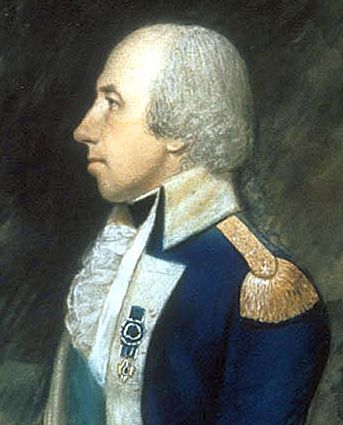
In the next decade after the Revolution, a few remote forts were established in the vast new land, and hunters and fur traders traveled on Indian pathways. A few “squatters” settled wherever they chose and without legal claim to the land. But still few pioneers dared trespass on the land claimed, and vigorously defended, by the Iroquois Nations and other tribes.
There were also economic reasons holding back settlement just after the Revolution. An unprecedented financial panic had gripped the new nation since the end of the war. Under the Articles of Confederation the government had few resources, and the various forms of money were nearly worthless, especially the script issued as pay to veterans. Farmers could be imprisoned for debt and veterans resented that the patriots who had fought during the War were often at a significant financial disadvantage relative to those who stayed behind. Many former soldiers joined an armed rebellion in 1786 led by Daniel Shays, a poor Massachusetts farmer and veteran, protesting the unfair conditions. In the midst of this widespread depression, many began to see the West as opportunity.
McCullough opens his book by telling of a pivotal meeting held at the Bunch of Grapes Tavern in Boston in 1786. General Rufus Putnam, a widely admired hero of the Revolution, farmer and surveyor, summoned a number of fellow officers to discuss “the Ohio cause.” It was not surprising that Putnam took the initiative, since during the Revolution he led 288 officers in signing the Newburgh Petition, asking that land in the Ohio country be given to veterans in payment for military service.
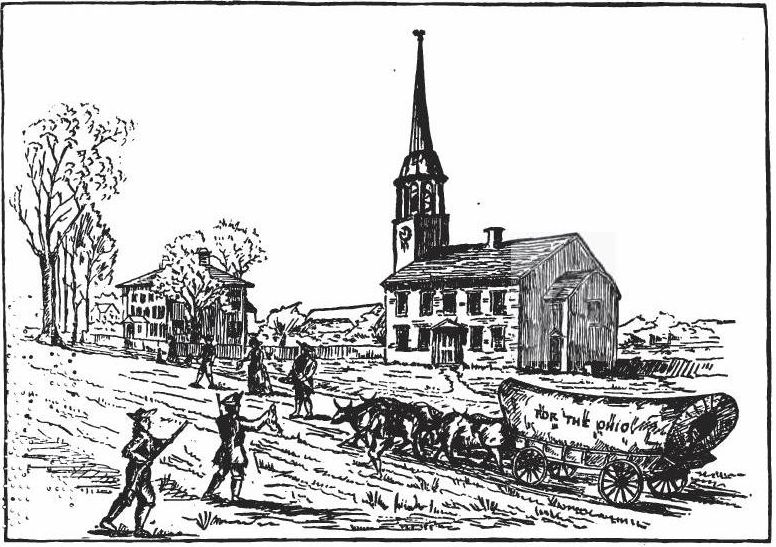
The plan now discussed at the Bunch of Grapes was to form a company to purchase from the government lands in Ohio and establish a first settlement there. They would raise a fund of a million dollars by selling shares, which could also be bought with the certificates held by the veterans plus $10 in gold or silver.
The group chose the Rev. Manasseh Cutler to negotiate with the Continental Congress in the purchase of the land. Congress would enact a new Ordinance to establish how new states were to be laid out, and, importantly, the conditions under which they were to enter the Union. The negotiations were complicated due to the fact that the Federal government still functioned under the Articles of Confederation. The new Constitution would not even be ratified drafted until the following year.
The first pioneers—forty-eight men including surveyors, carpenters, boat builders, common laborers, and a blacksmith— left in December 1787 from Ipswich Hamlet and from Hartford, Connecticut. “Their tools, one ax and one hoe per man, as well as thirty pounds of baggage, were to be carried in the company wagon,” writes McCullough. “In addition, each man was to furnish himself with one good musket, a bayonet, six flints, powder horn and pouch, priming wire and brush, half a pound of powder, one pound of musket balls, and a pound of buckshot. Wages were $4 a month.”
It is hard to imagine how difficult it must have been to walk 700 miles in the dead of winter from New England to New York, then Harrisburg, and then over mountains and through the wilderness of western Pennsylvania. The goal of the pioneers was to reach Sumerill’s Ferry on the Youghiogheny River, where they could build boats on which to float toward the frontier town of Pittsburgh, and then down the Ohio River. The Great Conestoga Road from Philadelphia to Lancaster had been completed in 1741, and in 1785 the state had authorized a “Pennsylvania Road” from Harrisburg to Pittsburgh following the old Forbes Road, an old Indian trail that had been widened during the French and Indian War to allow the army to capture Fort Duquesne.
These two roads, now linked, would be the main migration route from the east to the Ohio Valley until the building of the Erie Canal in 1834. But the Forbes Road was no easy pathway, especially in the dead of winter.
However, “spirits were high and the importance of getting there with the least delay possible was very much in mind,” writes McCullough. “Once at the Ohio, time would be needed to build boats for the journey downriver—all to arrive in early spring, soon enough to get in a first planting of gardens and corn sufficient for survival.”
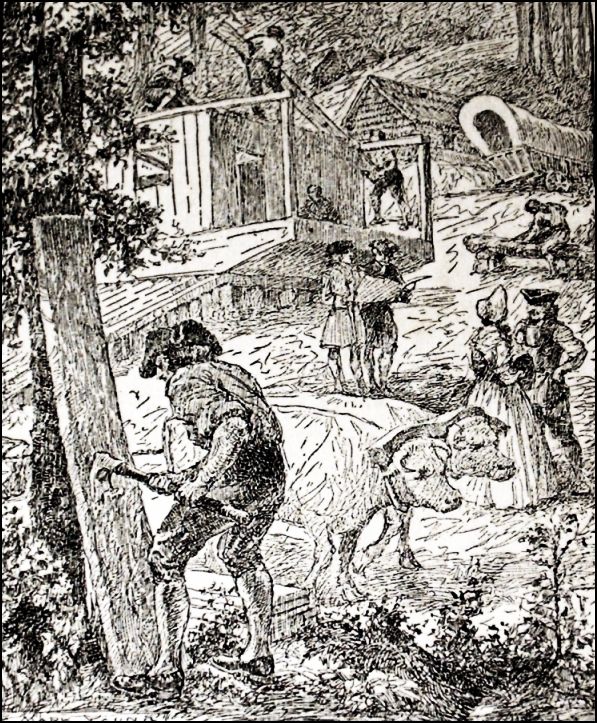
As the pioneers traveled across western Pennsylvania, the weather grew worse. “So great a quantity of snow fell ... as to quite block up the road,” wrote Gen. Putnam later. “Our only resource now was to build sleds and harness our horses one before the other, and in this manner, with four sleds and the men in front to break the track, we set forward.”
“Traveling both these days very bad. Men and horses much fatigued,” continued Putnam. The temperature kept dropping. “[The] cold last night and this day may be the coldest this winter,” he recorded on February 5.
Finally, on February 14, after crossing the western Allegheny Mountains, they reached Sumerill’s Ferry on the Youghiogheny, thirty miles southeast of Pittsburgh. Unfortunately, they found their advance party hadn't made much progress on construction. “No boats built, boards or planks in readiness, or person capable of building a canoe, much less a boat,” wrote Putnam. Water for the sawmill was frozen, and workers were sick with smallpox.
But with the new group of pioneers, boatyard work began in earnest and six weeks later they completed a large, roofed galley, 45 feet long and twelve wide. A smaller flatboat and some canoes were also built.
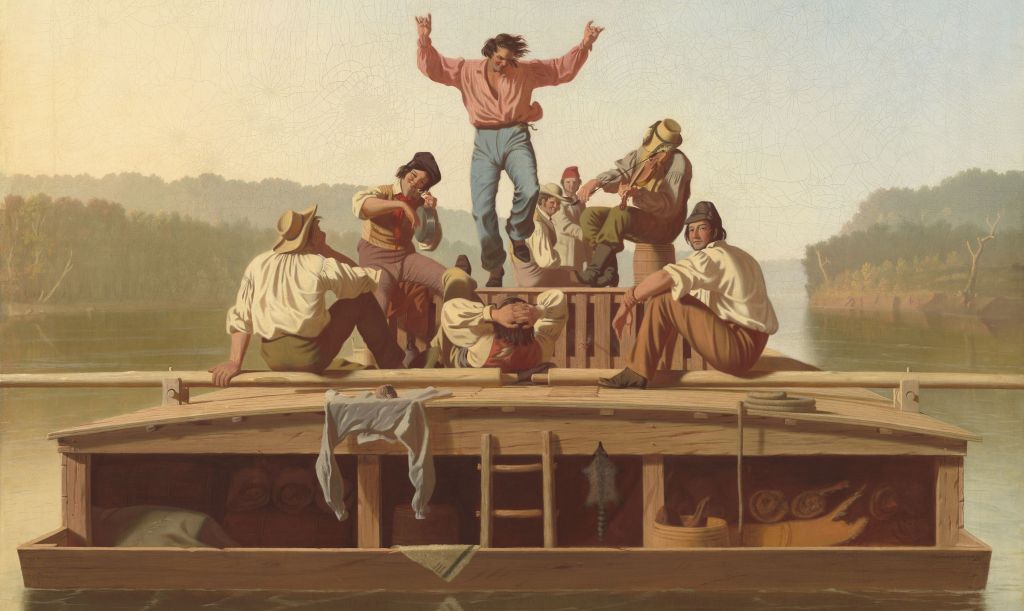
On April 2, the expedition pushed off their boats, loaded with tools, tents, and provisions, and drifted away with the current. From this point they would travel north to McKeesport and then to Pittsburgh, where there was a rough frontier settlement of perhaps 150 log cabins. This, of course, was where the Monongahela River merged with the Allegheny to form the Ohio River — the Gateway to the West.
The spring thaws were now flooding the rivers, and the current carried them north to where the Beaver River flowed into the Ohio, only about 100 miles from Lake Erie as the crow flies. Eventually, the Ohio turned south-southwest, constantly twisting and changing direction. The boats were in frequent danger of hitting sandbars or trees sunk underwater with sharp, broken-off branches sticking out, ready to gouge the hull of a boat or canoe.
On April 5, the boats passed the settlement of Wheeling on the Virginia side of the river. The town "was growing steadily, in contrast to the northern side where there was as yet not a single legal settlement," writes McCullough. At last, about one o’clock on Monday, April 7, the boats tied up on the point of land where the Muskingum River flowed into the Ohio. "The pilgrims aboard their Mayflower had landed at Plymouth Rock."
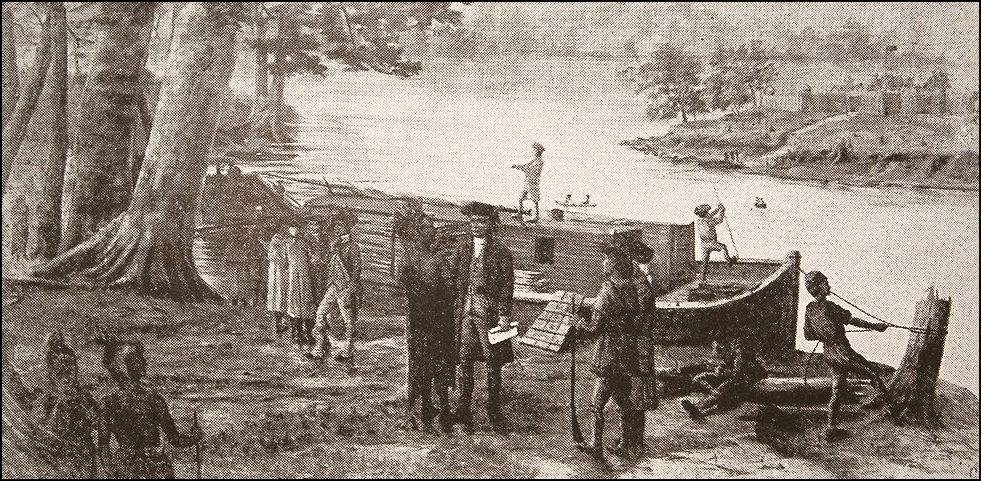
The pioneers got right to work on building their new settlement — the first in the Northwest Territory. "The overriding, immediate tasks were clearing land and building shelter," writes McCullough. "Though accustomed as most were to hard work, few had had any experience in clearing virgin forests. Sometimes it took one man three to four weeks to chop down a single acre of hard-wooded forest, leaving the stumps in the ground. When it came to the largest of the trees, they had to be “girdled”—a ring of bark cut away around the trunk, so that the sap could not rise—and thus the tree would stand in place and slowly die. Many of the giant surviving stumps were to last for decades."
Of course, there were Native Americans who already “considered the Ohio country their rightful, God-granted domain.” Gen. Putnam reported that, “At present, we do not think ourselves perfectly secure from them.” The Delawares and Wyandots appeared friendly, but he worried about the Mingos, Shawnee, and Cherokee.
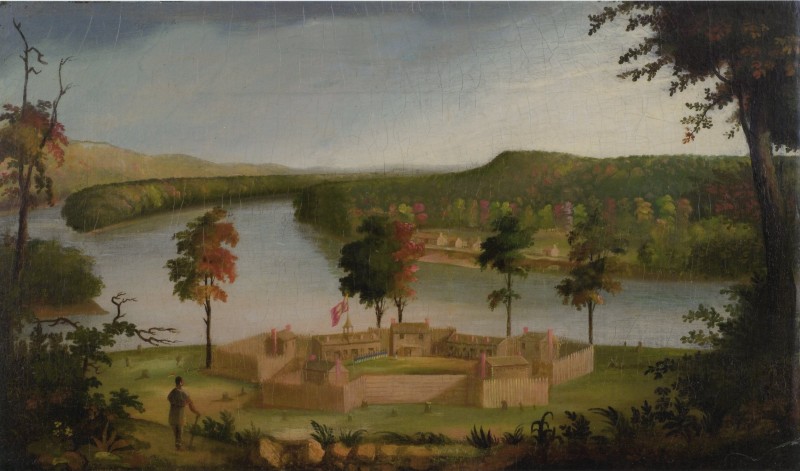
The settlement of the Ohio Territory was off to a promising start, but much work — and danger — lay ahead. An early frost in 1789 killed many of the crops and led to "the hungry year," complicated by the Indians having deliberately killed most of the game in the area around Marietta. There would be the disastrous 1791 expedition led by Gen. Arthur St. Clair in which half of the 1,400 Americans involved, including women and children traveling with the army, were either killed or wounded. The Battle of the Wabash would be called "the most decisive defeat in the history of the American military" by some historians. Three years later, Gen. Wayne's victory at Fallen Timbers reduced the Indian threat.
“Ohio Fever” soon took hold of hundreds of thousands of Americans on the eastern seaboard. Even George Washington gave a ringing endorsement. “No colony in America was ever settled under such favorable auspices as that which has just commenced at Muskingum,” he wrote in one letter. “I know many of the settlers, personally, and there never were men better calculated to promote the welfare of such a community.”
Thanks to David McCullough for digging into and telling their story in his inimitable style.

